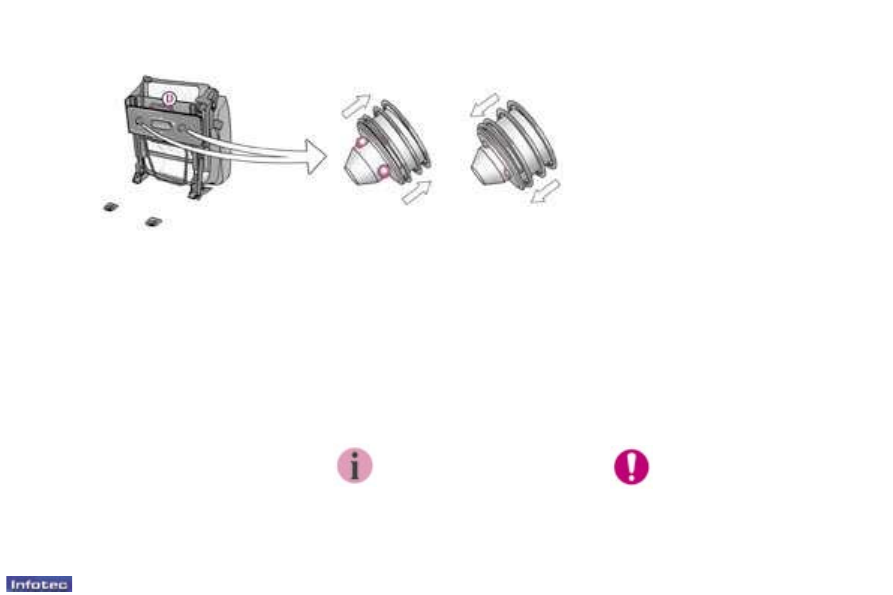Peugeot 1007 Dag (2005.5). Instruction - part 7

96 - Comfort
01-10-2005
97
-
Comfort
01-10-2005
Never drive with the head
restraints removed, they
must be in place and cor-
rectly adjusted.
Locked
Released
In order to ensure that the
seat covers have a long
service life, do not leave
the seat in the table or
"fully folded" position after
loading.
Avoid placing luggage on the seats
when they are in the table position.
REAR HEAD RESTRAINTS
The rear head restraints can be re-
moved and have two positions;
- high, position for use
- low, storage position
To raise a head restraint, pull it
upwards.
To lower it, press the lug then the
head restraint.
To remove it, place it in the high
position, push the lug and pull it
upwards.
To reit it, engage the head restraint
rods in the holes taking care to re-
main in the centreline of the seat
back.
Repositioning the seat
Press the control
D upwards to check
that the rear feet are released.
Tilt the folded seat rearwards.
The rear feet are secured automati-
cally.
Check that the seat is secured cor-
rectly.
Raise the seat back, releasing it irst
by pulling the control
C.